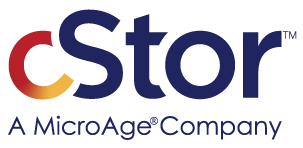Why Shiny Object Syndrome Could Be Secretly Sabotaging Your IT Success
By Pete Schmitt, CTO, cStor

There’s an interesting phenomenon happening: as innovation continues to accelerate, we seem increasingly fascinated with – and I dare say addicted to – having the latest technology in our pockets, at home, on vacation, and yes… even at work.
I see it almost every day, and although I only play a psychologist with the fish I’m trying to catch on the weekends, in the human world, I’d call this a classic case of Shiny Object Syndrome, or “SOS”. Yes, confession time: I have it too around all kinds of things… phones, cars, computers, even fishing lures.
My latest fascination is with a new lure called the “Whopper Plopper.” Initially, I saw a friend using them and thought, “Cool, but I’ve got some great lures that work; I’m pretty happy. Wait… well, how much better could they really be? Maybe I should check it out. Hmmm…”
Next thing you know, I’m hunting and find this:

😃Done! Purchased! GUILTY!!
Yes, the first time I used them they were amazing. They really do work… there’s my plug. Maybe I’ll get a new endorsement deal from Whopper Plopper, Inc. (kidding)! So, what’s the harm, you ask? We live in a cool time in history, and it is human nature to explore and innovate. So, why not get your hands on the new cool stuff to try and make life easier and even more fun along the way?
Signs You Have Shiny Object Syndrome
That thinking may work fine for cell phones and fishing lures, but when you carry those ‘thought patterns’ into the IT world, it comes with some risks. So, let me start with a couple of signs that may indeed indicate you have SOS at work and not really be aware of it… since the first step in any 12-step program is ‘awareness.’ Oh, and for the record, the official definition:
Shiny Object Syndrome (SOS) is the tendency to follow an idea or trend without first weighing its potential and as a result, get distracted from your current pursuit.
1. You’re Easily Distracted and Are Not Truly ‘Finishing’ Projects
Maybe you get a new idea while researching how to solve a current IT problem. You find potential solutions, head down a path, then get pitched by another vendor, and head down that path instead… and on and on it goes.
2. Lack of Clear Plans and Direction
Part of the SOS includes the addiction to starting new things, then veering off course or down rabbit holes into the weeds, losing sight of the original objective, and never getting back to the original plan.
3. You’re Working with a Confused Team
I don’t need to say much here about how #1 and #2 lead to a confused, disjointed team. Never a good thing.
4. Burning Through Budget
Starting and never finishing projects through to real business outcomes and moving from one new thing to the next with every pitch you get from any vendor that has your ear is likely to result in wasted budget, and of course time. Also, two big “no-no’s” in the business world.
Now you may be having some real self-awareness thoughts…. that’s good! However, the way these behaviors may be sabotaging your success is that you’re using these habitual thought patterns to continually justify why you have these behaviors in the first place. And so, the cycle goes on and on.
If SOS Applies to You
Clearly if these traits even loosely apply to you, there’s a good chance you’re sabotaging progress, and yourself, without really understanding why or what’s happening. Therein lies the exact danger I’m really referring to. So here are a few tips for how to become aware of these patterns at work, and most importantly, how to shift them and get back on track.
1. Create a Plan & Set Measurable Goals
Create a three to five-year plan and then with consistency and regularity, check in on your progress against that plan. Be sure it has a ‘lighthouse’ objective with key milestones you need along the way, so you and your team can ensure that you don’t lose sight of the big picture OR the priorities day-to-day. It’s fine if things change – the business, market, etc. – and you have to adjust. You’re still marching forward with a blueprint in place.
2. Stop Chasing & Start Measuring
Once the plan is in place and goals are set (and you have buy-in), you’ll have a clear ‘acid test’ for any shiny new technology that comes along. This will tell you whether or not it will help solve your challenges and where it fits in the priority of business goals and challenges you’re facing.
We live in an instant gratification culture, and there’s an entire generation that was born into this environment. So, it’s imperative that you activate the other parts of your brain and shift these thought patterns. It’s true that some of the world’s greatest innovators were always ‘onto the next thing,’ but the other important part is to realize they were consistent and relentless in setting the goals in the first place and then finishing them.
3. Optimize Your Time & Stay Organized
The other character trait of successful people is that they know where to prioritize their time and efforts, where to focus their finite amount of energy, and how to stay organized no matter how much comes their way.
In our world, that means staying on top of the latest tech trends and then putting them to the real test so we can understand the true business impact over just the cool factor. Ask questions like ‘does it integrate with everything we need it to? What’s the true total cost of ownership even if there’s a low cost of entry, etc.
In the End…
Well, there is no end. This innovation cycle will continue. It’s up to us to adapt in new ways and evolve our own thinking so that we don’t get caught up justifying our continual SOS diagnosis by staying caught in the perpetual ‘hype cycle.’ Focus your energy on the big picture and how you’ll use technology to drive meaningful business outcomes over the long haul rather than impress your friends at the next BBQ.
As always, if you need some therapy, we’re here to help. Oh, and I’ve started group therapy for “FISHING LURE ADDICTS ANONYMOUS.” Shhhh, don’t tell anyone… it may not last.








